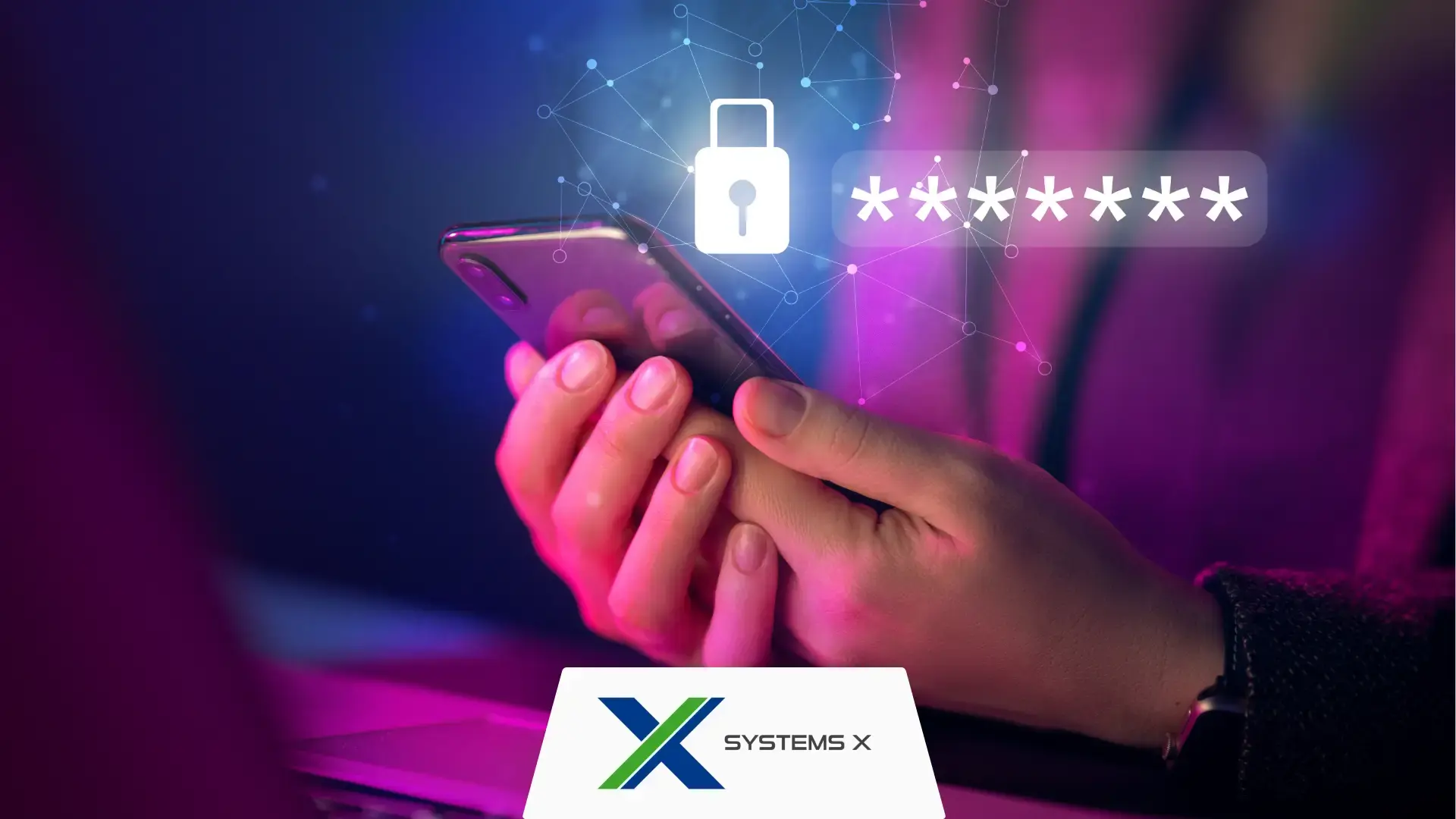4 min read
When Devices Walk In: How BYOD Security Risks Threaten Data Beyond the Firewall
 Mike Brattain
:
Apr 3, 2025 3:42:01 PM
Mike Brattain
:
Apr 3, 2025 3:42:01 PM

BYOD security risks are like unlocked doors in a digital skyscraper—inviting, unnoticed, and increasingly dangerous. As employees blur the lines between work and personal tech, companies face exposure they never budgeted for. What once promised flexibility now threatens stability.
In fact, 53% of organizations have experienced data breaches linked to personal devices. What does this imply? Convenience without control can cost more than it saves. This stat isn’t a warning, it’s a flashing red light.
| Mike Brattain, IT Success Strategist at Systems X, says, “Security isn’t what you see - it’s what you forgot to look for.” When BYOD is poorly managed, it becomes a silent liability. |
In this blog, we’ll explore the under-the-radar security issues with BYOD, real-world implications, and strategic actions your business can take to stay protected without stifling flexibility.
The Hidden Pitfalls of Flexibility: Unmasking Modern BYOD Risks in the Workplace
As personal devices increasingly power business workflows, BYOD risks evolve into far more than a technical nuisance. What starts as convenience soon grows into a sprawling threat landscape teeming with data leaks, security blind spots, and user behavior challenges that IT leaders often overlook. With work-from-anywhere now the norm, the risks are both structural and systemic.
- Inconsistent device security: Unlike managed endpoints, employee devices often lack enterprise-grade protection, making them easy targets.
- Shadow IT proliferation: Unvetted apps installed on personal phones and laptops often slip past centralized monitoring.
- Weak encryption practices: Personal devices may use unsecured networks or rely on default encryption settings that fail under real attack pressure.
- Delayed patching cycles: End users typically delay updates, which means vulnerabilities persist long after fixes are available.
- Increased insider threat vectors: Compromised or careless users blur the line between negligence and attack surface expansion.
Ultimately, BYOD risks demand more than an acceptable use policy. They require a security strategy that anticipates human behavior, applies layered protections, and continuously monitors device access across every environment, whether on-site or remote.
The Unseen Layer: How BYOD Security Risks Hide Behind Everyday Habits
The real danger with BYOD security risks lies in how invisible they can be to both employees and IT departments. Personal devices feel safe to users because they control them, but that false sense of security is precisely what bad actors exploit.
When users casually connect to public Wi-Fi, forward sensitive emails to personal inboxes, or install browser extensions without a second thought, security boundaries are silently breached.
This is especially alarming considering 28.2 percent of workers now operate in hybrid setups, while 12.7 percent work fully remotely, according to this CloudSecureTech report. These users rarely operate inside a corporate firewall and are often beyond the reach of standard endpoint controls. Traditional perimeter-based security no longer holds, and personal habits are shaping the next wave of breaches.
When behavioral patterns become gateways, device trust is a liability. To tackle BYOD security risks, IT must address not just tools and policies, but also culture, communication, and the personal comfort zones where security rules break down the fastest.
Real-Time Threats, Real-World Consequences: The Velocity of BYOD Risks Today
In a digital era ruled by speed, BYOD risks evolve in real-time. Organizations cannot afford to treat personal device threats as static or low-priority issues. The attack surface shifts daily, and every connected device becomes a potential breach vector.
- Lateral movement exposure: Once breached, a personal device may serve as a launchpad into critical business systems.
- Credential harvesting: Saved passwords on mobile browsers can be extracted and used across corporate platforms.
- Inadequate logging: Personal devices often lack proper logging tools, making forensic analysis almost impossible after a breach.
- Cloud sync vulnerabilities: Unauthorized file sync between personal and corporate cloud services spread sensitive data outside controlled environments.
- Poor MFA enforcement: Many BYOD setups skip multi-factor authentication due to compatibility or user pushback.
The speed of compromise is shocking. On average, there is a hacker attack every 39 seconds. That means during a single lunch break, dozens of attack attempts may hit endpoints, many of which are unmanaged. BYOD risks are not occasional—they are constant, and they require cybersecurity strategies built on adaptability and foresight.
Common BYOD Scenarios and Their Real-Time Risk Amplifiers
|
Scenario |
Triggering Factor |
Why the Risk Escalates in Real Time |
|
Personal device connects to corporate VPN |
Compromised device or outdated OS |
Malware gains lateral movement into the corporate network instantly |
|
Employee installs a third-party note app |
App sourced from unverified marketplace |
Data scraped or stored in unsecured cloud with no audit trail |
|
Shared tablet used for both work and family |
Inadvertent file access or deletion by another household user |
Sensitive files are exposed or lost without backups |
|
Syncing personal device with public cloud |
No enforced encryption or MDM |
Corporate data is replicated to personal storage with zero visibility |
|
BYOD device joins public Wi-Fi at café |
No VPN usage or endpoint isolation |
Session hijacking or man-in-the-middle attacks occur in under 30 seconds |
Compliance Under Fire: When BYOD Risks and Issues Break the Rules
When it comes to regulatory alignment, BYOD risks and issues present a dangerous minefield for compliance teams. From HIPAA to GDPR, today’s regulatory frameworks demand rigorous control over data access, retention, and security. Personal devices, by design, are hard to audit, harder to monitor, and nearly impossible to enforce without consent or oversight.
Each regulatory violation carries not only legal consequences but long-term reputational fallout. BYOD users might download sensitive files onto unsecured devices or allow family members to access work-related data unknowingly. These seemingly small acts can trigger data loss events or noncompliance findings during audits.
The challenge with BYOD risks and issues is not that they are new—it is that they continue to evolve faster than compliance measures can keep up. Without a detailed, enforceable BYOD policy backed by technical controls, businesses risk regulatory misalignment with every login.
|
More articles you might like: |
Think You’re Covered? How BYOD Security Risks Deceive Even the Most Mature IT Setups
The belief that a mobile device management platform is enough to contain BYOD security risks is dangerously optimistic. Mature organizations often assume their layered defenses, access controls, and endpoint policies are sufficient, but BYOD is not just another endpoint—it is a behavioral wildcard.
- Users disable security features: Many users turn off device-level protections to boost performance or avoid app conflicts.
- Family usage loopholes: Shared devices at home allow unintended users access to corporate communication apps.
- Poor separation of data: Without containerization, business and personal data co-mingle, raising the risk of accidental disclosure.
- BYOD fatigue: IT teams often deprioritize BYOD due to limited visibility or a false sense of control.
- Outdated BYOD policies: Many policies were created pre-pandemic and no longer reflect today’s risk climate.
Even organizations with excellent frameworks often miss the subtle behavioral and operational variables that define BYOD security risks. To truly manage this risk category, businesses must combine endpoint strategy with culture shifts, proactive training, and context-aware security policies that evolve with both users and threat landscapes.
Your BYOD Strategy Deserves More Than Reactive Measures
At Systems X, we understand the layers beneath every mobile login and the strategic foresight it takes to manage them. Our approach aligns policy, behavior, and technical controls in one cohesive structure.
The result is not just a secure BYOD environment - it is a smarter one.
|
Discover Trusted IT Services Near You: |
|
Contact us to rethink what secure flexibility truly means.





